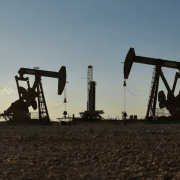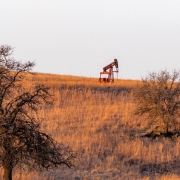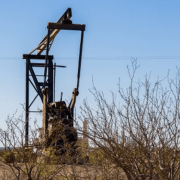⚠️ IMPORTANT LEGAL DISCLAIMER:
The information provided on this page is for general informational purposes only and does not constitute legal, financial, or investment advice. Oil and gas laws, mineral rights regulations, and royalty structures vary significantly by state and jurisdiction. While we strive to provide accurate and up-to-date information, no guarantee is made to that effect, and laws may have changed since publication.
You should consult with a licensed attorney specializing in oil and gas law in your jurisdiction, a qualified financial advisor, or other appropriate professionals before making any decisions based on this material. Neither the author nor the publisher assumes any liability for actions taken in reliance upon the information contained herein.
Royalty contracts are common in industries such as oil and gas, music, entertainment, and publishing. They provide a structured way for creators, property owners, or mineral rights holders to receive a share of the profits generated from the use or extraction of their assets. However, disputes can often arise regarding the interpretation, implementation, or payment terms of these contracts.
Resolving disputes efficiently is essential to protect relationships, avoid lengthy litigation, and ensure the contract’s smooth execution. Effective dispute resolution techniques can save time, costs, and preserve relationships between contracting parties. This article delves into the most effective techniques for resolving disputes in royalty contracts, from negotiation and mediation to arbitration and expert determination.
Understanding the Nature of Royalty Contract Disputes
Before exploring techniques for dispute resolution, it’s essential to understand the nature of royalty contract disputes. These disputes often arise due to several key factors:
- Ambiguous Contract Terms: Misunderstandings due to vague or unclear language in contracts can lead to disagreements over the calculation and payment of royalties.
- Underpayment or Non-Payment of Royalties: Disputes commonly arise when one party alleges that royalty payments are inaccurate or not being made according to the contract terms.
- Audits and Reporting: Many royalty contracts require regular reporting and auditing of revenue streams, and disputes can occur over the accuracy of these reports or access to relevant financial records.
- Termination or Breach of Contract: If one party believes the other has failed to meet their obligations, disputes over contract termination or breach can result.
Addressing these disputes quickly and effectively is critical to maintaining healthy business relationships and minimizing disruption.
Negotiation as a First Line of Defense
Negotiation is typically the first step in resolving disputes in royalty contracts. It involves the parties directly involved in the contract working together to reach a mutually acceptable solution without involving third parties. Negotiation can be informal or structured, depending on the complexity of the dispute and the relationship between the parties.
Key Strategies for Effective Negotiation
- Clear Communication: One of the primary reasons for disputes is a lack of clear communication. Ensure that all parties fully understand the terms of the contract and that there is an open dialogue about any concerns or misunderstandings.
- Preparation and Understanding of Contract Terms: Before entering a negotiation, both parties should thoroughly review the royalty contract and gather all relevant information. This preparation helps clarify each party’s position and identifies areas where compromises can be made.
- Focus on Interests, Not Positions: A common mistake in negotiations is focusing solely on positions rather than underlying interests. For example, one party may demand higher royalty payments, but their actual interest may be in ensuring timely and accurate reporting of revenue. By addressing the underlying interest, both parties can often find creative solutions that satisfy both sides.
- Keep Emotions in Check: In any dispute, emotions can run high. However, it’s essential to approach negotiations with a calm, professional demeanor. Focus on the facts, the terms of the contract, and the desired outcome rather than letting frustration or anger dominate the conversation.
Negotiation is often successful because it allows both parties to retain control over the outcome and reach a solution tailored to their specific needs. It’s typically less costly and time-consuming than formal dispute resolution methods.
Mediation as a Facilitative Approach (Royalty Contracts Dispute Resolution)
Mediation is another effective technique for resolving disputes in royalty contracts. Unlike negotiation, mediation involves the use of a neutral third party—known as the mediator—who facilitates discussions between the disputing parties. The mediator’s role is not to impose a solution but to help the parties communicate more effectively and find a mutually agreeable resolution.
Benefits of Mediation
- Preserves Relationships: Mediation is often a preferred method in industries like entertainment or oil and gas, where long-term relationships are crucial. The process is collaborative rather than adversarial, which can help preserve business relationships.
- Flexible Solutions: Because the mediator doesn’t impose a decision, the parties retain control over the outcome. This flexibility allows for creative solutions that might not be available in more formal settings like arbitration or litigation.
- Confidentiality: Mediation is a private process, and the discussions that take place are confidential. This is particularly important in industries where public disputes could damage reputations or impact future business dealings.
Best Practices for Successful Mediation
- Choose the Right Mediator: It’s essential to select a mediator with experience in royalty contract disputes and knowledge of the specific industry involved. A well-versed mediator can help the parties navigate complex technical or financial issues.
- Be Open to Compromise: Successful mediation requires both parties to be willing to compromise. Approach the process with an open mind and a focus on finding a resolution rather than winning.
- Prepare Thoroughly: Just like in negotiation, both parties should come to mediation well-prepared. Have all relevant documents, including the royalty contract, payment records, and correspondence, ready for review.
Mediation is particularly effective when there is a need for ongoing business relationships, as it focuses on collaboration and mutual benefit rather than conflict and blame.
Arbitration as a Formal Dispute Resolution Method (Royalty Contracts Dispute Resolution)
In some cases, informal methods like negotiation or mediation may not result in a satisfactory resolution. Arbitration is a more formal approach to dispute resolution, where an arbitrator or a panel of arbitrators reviews the case and renders a binding decision. Unlike mediation, the arbitrator’s decision is final, and the parties must abide by it.
Advantages of Arbitration
- Binding Decision: The arbitrator’s decision is binding, meaning that once it’s made, both parties are legally obligated to comply with the ruling. This can provide finality to disputes that have dragged on without resolution.
- Expertise in the Industry: Arbitration allows the parties to select arbitrators with specific expertise in royalty contracts or the relevant industry. This ensures that the decision-maker has a deep understanding of the issues at hand and can make informed rulings.
- Efficiency and Confidentiality: Arbitration is generally faster and less expensive than litigation, and the proceedings are confidential. This makes it an attractive option for businesses that want to resolve disputes discreetly.
Preparing for Arbitration
- Review the Arbitration Clause: Many royalty contracts include an arbitration clause, specifying that disputes will be resolved through arbitration rather than litigation. It’s essential to review this clause carefully to understand the procedures, selection of arbitrators, and the rules governing the arbitration process.
- Present Clear Evidence: Arbitration is more formal than negotiation or mediation, and the parties will need to present clear, compelling evidence to support their claims. Prepare detailed documentation, including contract terms, financial records, and any correspondence related to the dispute.
- Select the Right Arbitrator: Choose an arbitrator with industry experience and knowledge of royalty disputes. A well-qualified arbitrator can navigate the complexities of royalty calculations, payment structures, and audit rights to deliver a fair decision.
Arbitration offers a more structured resolution process while still being more flexible and private than traditional court litigation.
Litigation as a Last Resort
While litigation is typically viewed as a last resort for resolving royalty contract disputes, it is sometimes necessary when other dispute resolution methods fail. Litigation involves taking the dispute to court, where a judge or jury will render a decision. This process can be time-consuming and expensive, but it may be the only option if the parties cannot agree through negotiation, mediation, or arbitration.
When Litigation is Necessary
- Breach of Contract: If one party has significantly breached the terms of the royalty contract, and there is no willingness to resolve the issue through negotiation or mediation, litigation may be the best option.
- Complex Legal Issues: Some disputes involve complex legal issues that require judicial interpretation. For example, if there is a disagreement over the ownership of mineral rights or the calculation of royalties under a specific legal statute, a court may need to rule on the matter.
- Enforcement of Arbitration Awards: In some cases, parties may need to go to court to enforce arbitration awards if one party refuses to comply with the arbitrator’s decision.
Preparing for Litigation
- Engage Experienced Legal Counsel: Litigation requires specialized legal expertise, especially in royalty contracts. Engaging an attorney with experience in royalty disputes ensures that your interests are well-represented.
- Gather Extensive Documentation: The court will require extensive documentation to support your case, including the royalty contract, payment records, audits, and any communications between the parties. Ensure that you have organized all relevant evidence and can present a compelling case.
- Prepare for a Lengthy Process: Litigation can be a lengthy process, often taking months or even years to resolve. Be prepared for the time and financial commitment involved.
While litigation may provide a definitive resolution, it’s often seen as the most adversarial and resource-intensive approach. Whenever possible, parties are encouraged to resolve disputes through less formal methods.
Expert Determination for Technical Disputes (Royalty Contracts Dispute Resolution)
In certain cases, royalty contract disputes involve technical or financial issues that require specialized knowledge. Expert determination is a process where an independent expert is appointed to resolve specific issues, such as the calculation of royalties, interpretation of contract terms, or auditing disputes. The expert’s determination is usually binding on the parties.
When to Use Expert Determination
- Complex Calculations: Royalty contracts often involve complex financial calculations, such as the percentage of revenue generated or deductions for operating expenses. If there is a dispute over these calculations, an expert with accounting or financial expertise may be better suited to resolve the issue than a judge or arbitrator.
- Industry-Specific Issues: In industries like oil and gas, mining, or entertainment, disputes may arise over highly technical matters, such as production levels, reserve estimates, or intellectual property rights. An industry expert can provide a more informed and accurate resolution to these disputes.
Selecting an Expert
- Industry Experience: The expert should have a deep understanding of the specific industry and the issues involved in the dispute. For example, in oil and gas royalty disputes, the expert should have experience in the energy sector and knowledge of production reporting and royalty calculations.
- Impartiality: It’s essential to select an expert who is impartial and has no vested interest in the outcome of the dispute. The expert should be agreed upon by both parties to ensure fairness.
Expert determination can be a highly effective way to resolve technical disputes quickly and accurately, without the need for lengthy litigation or arbitration.
Dispute resolution in royalty contracts requires a combination of effective communication, strategic negotiation, and the use of appropriate formal or informal processes. Whether through negotiation, mediation, arbitration, or expert determination, each method offers unique advantages for resolving disputes efficiently and fairly.
By understanding the different techniques and applying them thoughtfully, royalty holders and contracting parties can navigate disputes with minimal disruption and preserve their valuable business relationships. Ultimately, the key to successful dispute resolution lies in preparation, flexibility, and a willingness to engage in dialogue while protecting legal rights.
Do you have any questions related to Royalty Contracts Dispute Resolution? Feel free to reach out to us here.
Remember: This information is for educational purposes only. Consult qualified professionals for advice specific to your situation and jurisdiction.











